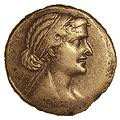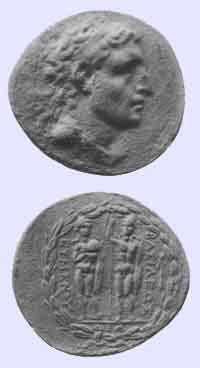 |
| Olympic ZEUS |
In about the late 7th century BC, several laboratories of Asia show large diversity of animals using techniques reminiscent of the Minoan and Mycenaean seal. Later divinesymbols engraved or local plants. At the turn of the 6th to the 5th century, Delos define the currencies of the lyre and archaic staters of the island pictured apple.
The human figure is close to the 6th century with the development of gods and heroes.The single head, the eye was originally depicted with a strong head and a spherical shape. At the beginning of coining the male depictions are rare and often reflect the apotropaic Gorgon.
The depiction of the person with individual characteristics was not allowed. Darrio the Persian, the "great king" is assigned symbolically as an archer. Symbolic is the illustration of Themistocles, with head of a warrior. In coins that Artaxerxes allowed him to cut, engraved name, monogram or ΘΕ, but not the form.
The Greek kings did not even dare to commit such sacrilege. In the silver four-drachma,Philip B will pave the head of Zeus.
| Philip E' |
 |
| aspasia pericles mistress |
| The reverse coin depicts Zeus enthroned, holding a scepter and an eagle reflecting the cult statue sculpted by Pheidias in the Temple of Zeus at Olympia and race torch at left. |
| Demetrius the Besieger |
| Cleopatra E' |
| Mithridates V |
| Philetaerus Eumenes I |
 |
| Eumenes II |
| Ptolemy E |

